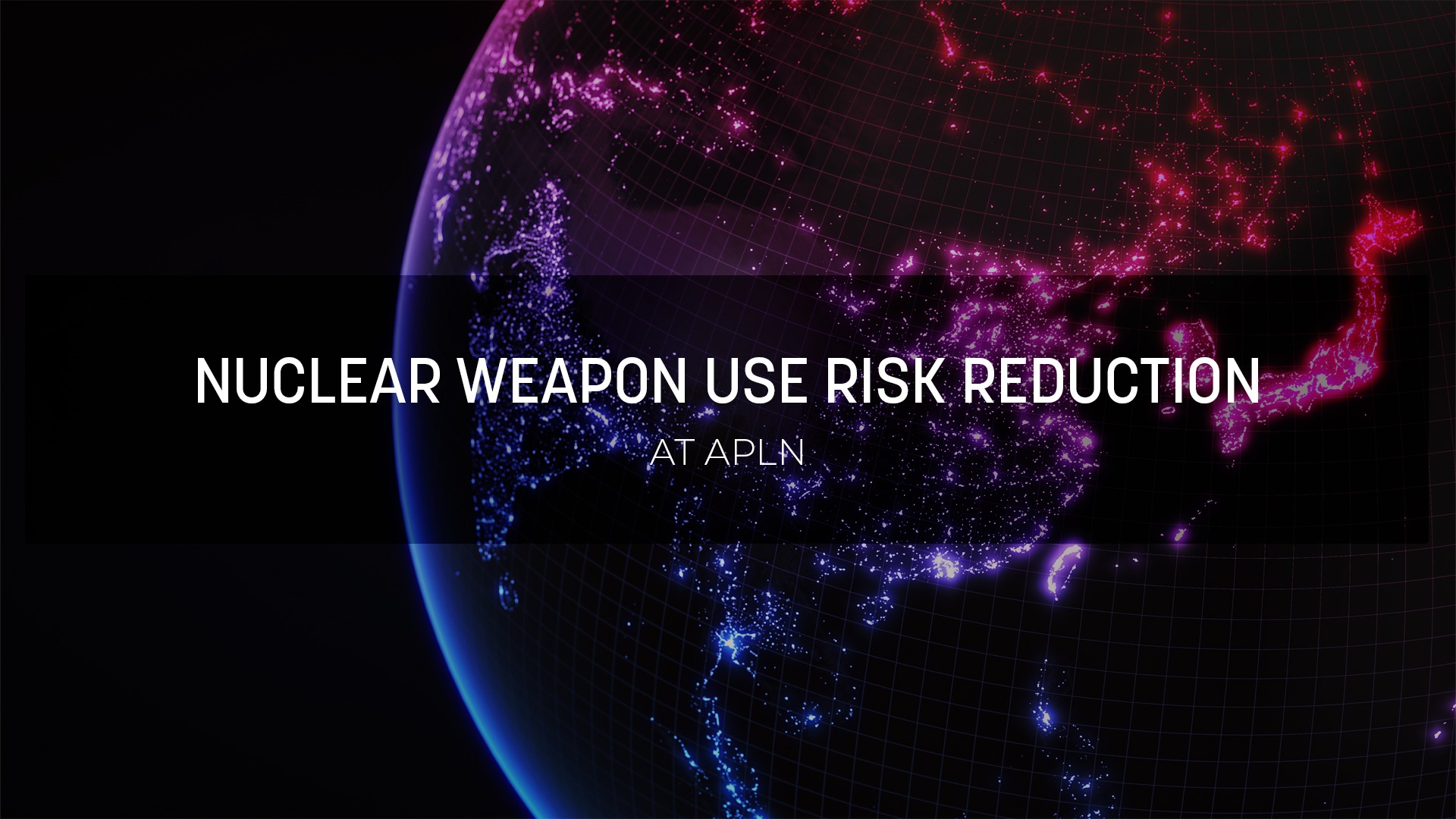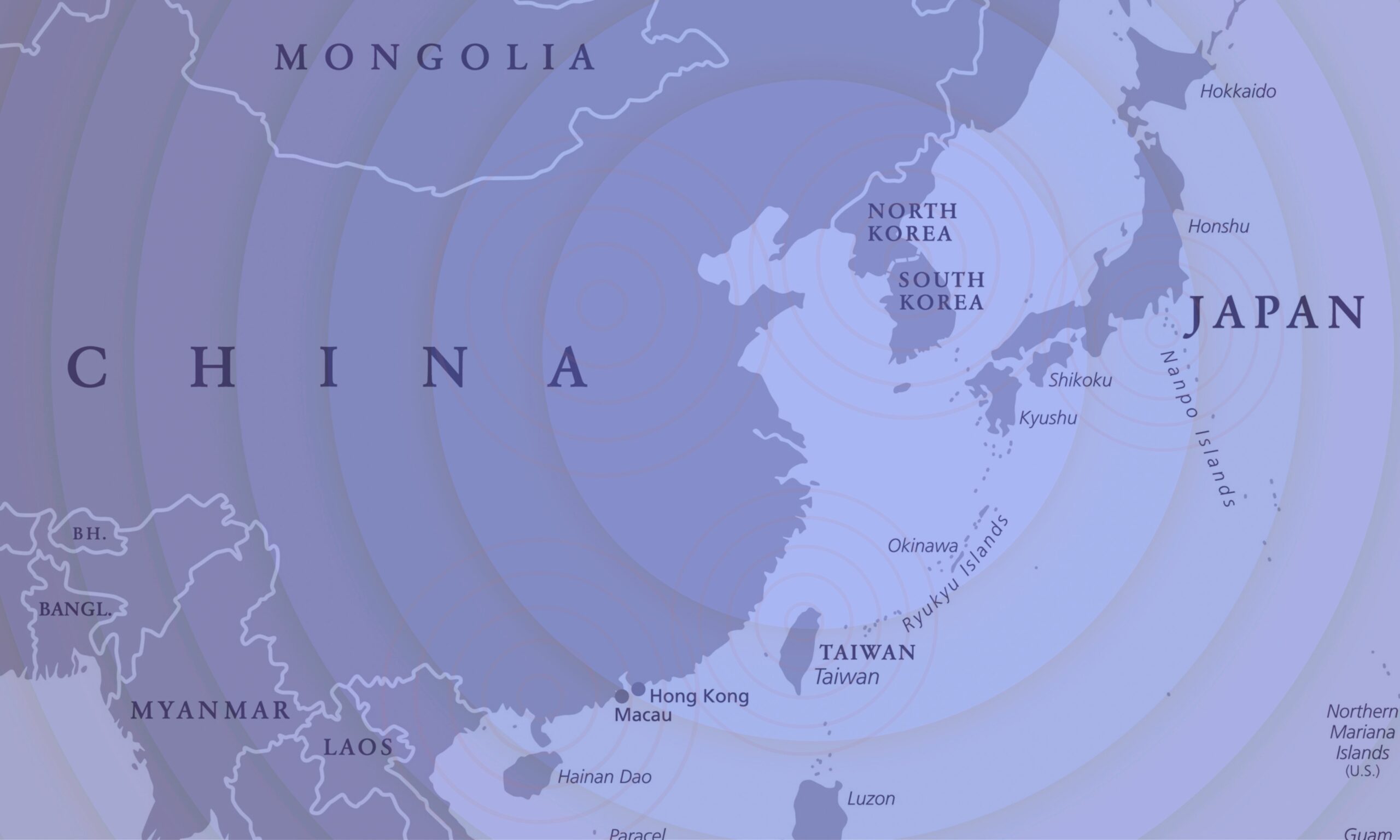The Human Horror of a Nuclear Conflict in Northeast Asia
This article was originally published in Global Asia. Reposted here with permission.
In 2022, the risk of nuclear war was already judged as at its highest since the end of the Cold War.1 By early 2023, Russia’s invasion of Ukraine and numerous comments by Russian President Vladimir Putin about nuclear weapons increased anxiety that Russia might choose to use tactical nuclear weapons in Ukraine.2 The perception of increased risk is not confined to the European theater. The simmering India-Pakistan conflict, the longstanding tensions on the Korean Peninsula and accompanying tides of inflammatory rhetoric, and conflict in the Middle East, including over Iran’s nuclear programs, also represent potential conflicts that could “go nuclear.”
Northeast Asia is thus one of four potential flash points where nuclear weapons might be used for the first time since the August 1945 attack on Nagasaki. The region includes two nuclear-weapons states, China and Russia, a self-declared nuclear-armed state, North Korea — formally known as the Democratic People’s Republic of Korea — and two non-nuclear-weapons nations under the US “nuclear umbrella,” the Republic of Korea (South Korea) and Japan. These last two have many of the capacities needed to quickly make their own nuclear weapons. Add to this group of actors the long-simmering and occasionally boiling issue of nuclear weapons on the Korean Peninsula, tensions over Taiwan and other regional disputes, and a number of potential nuclear-weapons “use cases” become plausible.
Western nations have responded to Russian actions in Ukraine with economic sanctions targeting specific Russian political and business leaders. In addition, they have provided tens of billions of dollars in military and economic aid to Ukraine to support its defense. While the lessons of that conflict for nuclear policy have yet to be fully determined,3 it is evident that planned or accidental use of nuclear weapons in the region is now entirely possible. In particular, North Korea’s “new nuclear doctrine” and some of China’s most recent statements about Taiwan have increased these concerns in Northeast Asia.
To illustrate the possible consequences of nuclear war in Northeast Asia, we prepared quantitative estimates of likely direct deaths and delayed cancer deaths resulting from specific pathways of nuclear weapons use.4 Five nuclear “use cases” were simulated and analyzed. They were designed to be plausible, span a range of outcomes from a single detonation to limited global nuclear war, and include a range of nuclear actors and targets initiated in Northeast Asia, with each involving the Korean Peninsula, and in some cases spreading to other regions.
Nuclear weapons use results in unimaginable death and destruction. Six impacts are:
- Thermal fluence (heat) from nuclear blasts.
- Firestorms: multiple fires lit by thermal fluence that coalesce into large-area conflagrations encircled by hurricane-force winds as the heat rising from the fires pulls cooler air in behind it. Physical damage caused by blast overpressure provides fuel for firestorms, which could burn for weeks.
- Blast overpressure, causing damage and collapse of buildings.
- Prompt radiation from the nuclear detonation itself.
- Fallout radiation, as radioactive material from the blast and contaminated debris are spread by wind and rain.
- Radiation-induced cancer deaths suffered by those exposed to prompt and fallout radiation but not killed by the nuclear blast immediately or in the short term (within several months to a year).
The five use cases we evaluated were titled:
- We’re Still Here (Variant 1), involving nuclear weapons use by North Korea followed by the United States, with three total detonations.
- US Leadership Hubris, involving first nuclear weapons use by the United States, followed by use by North Korea and China, with 18 total detonations.
- Use by Terrorists (Variant 1), with one weapon detonated in Japan by a terrorist group.
- Conflict from Ukraine Spreads East, involving first nuclear weapons use by Russia and followed by the United States, totaling eight detonations.
- Not Going Well in Taiwan, involving first nuclear weapons use by China followed by responses from the United States, with a total of 24 detonations.
Table 1 summarizes the estimated prompt and short-term deaths and radiation-induced cancer deaths resulting from the impacts above for each of the five use cases evaluated. Even in the most limited nuclear conflict, deaths were in the tens or hundreds of thousands, with the more extensive conflicts resulting in millions of deaths and hundreds of thousands of excess cancer deaths in following decades. It should be noted that even the most extensive conflicts evaluated were halted short of an all-out exchange of intercontinental nuclear missiles, which could certainly be possible and would have resulted in many more deaths. In the table below, “prompt” deaths are those caused by physical damage or fires in the immediate aftermath of detonations, including victims not killed immediately but dying within days or weeks, and “short-term” deaths include victims who succumbed to their injuries within the year following the nuclear attack.
As a conflict escalates, especially as progressively larger detonations target more populated areas, the humanitarian impacts of a nuclear conflict not only increase, but often grow by orders of magnitude. One contributing impact is the occurrence of deadly firestorms resulting from high-yield weapons detonated as air-bursts that cause far-ranging thermal fluence; such firestorms can significantly contribute to the lethality of nuclear weapons. Furthermore, even use cases with limited surface-bursts or using weapons of relatively low yield can cause a disproportionately high number of fatalities when acute health effects from high radiation doses and long-term cancer deaths are considered.
In Use Case 3, for example, a single surface-burst in an urban area resulted in estimated cancer fatalities on the same order of magnitude as the limited global nuclear war cases shown in Use Cases 2 and 5, both of which include a number of attacks on the Korean Peninsula. The short-term death toll from exposure to high fallout radiation could also be the same or higher in Use Case 3, though only one nuclear weapon has been detonated in an urban area. This result emphasizes how unpredictable the long-term and health impacts of nuclear use cases can be as it is nearly impossible to foresee whether a conflict will end after one detonation, 18 detonations, 24 or more, and whether urban areas will be targeted. Even when the conflict does not escalate to global nuclear war, it is possible that impacts consistent with those expected in a global-scale nuclear war can be felt after only one nuclear detonation.
As examples, the figures show:
- The modeled extent and direction of fallout (both extremely weather-dependent) on the Korean Peninsula from both “first use” and “response” detonations in Use Case 2;5
- A visualization of the estimated concentric zones of firestorms (orange shaded circles), likely-lethal blast damage (yellow “5 PSI” contour), and lethal radiation (red dashed “200 rem” ring) from an attack on a South Korean target.
All the detonations modeled here are of relatively low-yield nuclear weapons, within 10 kilotons.
In addition to devastating loss of life, a range of crippling economic and social impacts such as billions of dollars in infrastructure damage and healthcare costs, and a further set of difficult-to-evaluate but potentially significant global, regional and local ecological impacts such as climate effects, damage to oceans and ecosystems could also result from nuclear conflict.

The use cases are intended to be plausible, but capture only a small fraction of the possible pathways to nuclear war and its consequences. Nonetheless, several conclusions can be drawn from the limited number of use cases we have evaluated:
- A nuclear conflict based on regional issues can escalate to a global nuclear conflict within hours or days after the first use of nuclear weapons.
- Any nuclear detonations, even in areas relatively unpopulated, are likely to result in at least thousands of deaths, with possible fallout crossing international borders, causing additional health risks and increasing political tensions even when fallout levels are low.
- Even when focused on military (or military-industrial) targets, nuclear detonations may kill many hundreds of thousands of people within days or months, as well as cause hundreds of thousands of additional cancer deaths and great economic damage.
- The impact of mass fires or firestorms that result sometimes from nuclear explosions can surpass the lethality of other direct impacts. Historically, military planning for nuclear use has lacked sufficient consideration of firestorm impacts.
- Many of the plausible nuclear use cases developed for this project have their genesis in misinterpretation of intentions and lack of communication between adversaries, underscoring the need for communication between nations to avert nuclear weapons use.
- There are many pathways to nuclear war that would have cataclysmic effects. Most of these involve “slippery slopes” of descent into nuclear war, where an action by one party is misinterpreted by another, leading to conflict escalation that proceeds further and more rapidly than adversaries intend or foresee. As such, these potential pathways to nuclear war are often invisible to policymakers.

Reducing the risk of choosing or stumbling onto one of these pathways urgently requires developing and applying regional and global policy measures such as increasing the transparency of nuclear stockpiles, nuclear deployments and operational and declaratory doctrines such as increasing communications between civilian and military leaders through the use of nuclear hotlines. In addition, the devastating impact of firestorms must be integrated into nuclear targeting decisions in order to properly account for the humanitarian impacts of nuclear weapons use.
In conclusion, it is imperative to adopt policy measures to reduce the role of nuclear weapons in security policy and to revive arms control and disarmament diplomacy. Such measures include introducing a nuclear no-first-threat norm to augment existing no-first-use doctrines, resolving regional conflicts, ultimately establishing a regional security framework including denuclearization of the Korean Peninsula and creation of a nuclear weapon-free zone.
Notes
1 As noted in the Year 1 Report of the Reducing the Risk of Nuclear Weapons Use in Northeast Asia (NU-NEA) Project, published in January 2022. See RECNA-Nagasaki University, Asia Pacific Leadership Network, Nautilus Institute, Possible Nuclear Use Cases in Northeast Asia: Implications for Reducing Nuclear Risk, NAPSNet Special Reports, Jan. 27, 2022. nautilus.org/napsnet/napsnet-special-reports/possible-nuclear-use-cases-in-northeast-asia-implications-for-reducing-nuclear-risk
3 For more, see these articles at nautilus.org/category/napsnet/napsnet-policy-forum/: Cheon Myeongguk, “Implications of the Ukraine War for ROK Security,” Dec. 5, 2022; Anastasia Barannikova, “Potential Implications of the Situation in Ukraine for Russia’s Nuclear Deployment in Northeast Asia,” Nov. 7, 2022; Paul K. Davis, “Potential Implications of the War in Ukraine for Northeast Asia,” Oct. 27, 2022; Tong Zhao, “Implications of Russia’s Nuclear Signaling During the Ukraine War for China’s Nuclear Policy,” Oct. 13, 2022; and Alexandre Y. Mansourov, “Birds of a Feather: Thoughts on Pyongyang’s Lessons from the War in Ukraine,” Oct. 7, 2022.
4 Year 2 NU-NEA report at RECNA-Nagasaki University, Asia-Pacific Leadership Network, Nautilus Institute, Humanitarian Impacts of Nuclear Weapons Use in Northeast Asia: Implications for Reducing Nuclear Risk, March 2023, see www.recna.nagasaki-u.ac.jp/recna/bd/files/Year_2_NU-NEA_Report_E_2303.pdf; www.apln.network/projects/nuclear-weapon-use-risk-reduction/humanitarian-impacts-of-nuclear-use-cases-in-northeast-asia; and nautilus.org/napsnet/napsnet-special-reports/humanitarian-impacts-of-nuclear-weapons-use-in-northeast-asia-implications-for-reducing-nuclear-risk/
5 Nuclear Fallout Simulation was performed using the Hybrid Single-Particle Lagrangian Integrated Trajectory model described in A. F. Stein, R. R. Draxler, G. D. Rolph, B. J. B. Stunder, M. D. Cohen, and F. Ngan, “NOAA’s HYSPLIT Atmospheric Transport and Dispersion Modeling System,” Bulletin of the American Meteorological Society Vol. 96, No. 12 (2015), pp. 2059-2077, doi.org/10.1175/BAMS-D-14-00110.1




